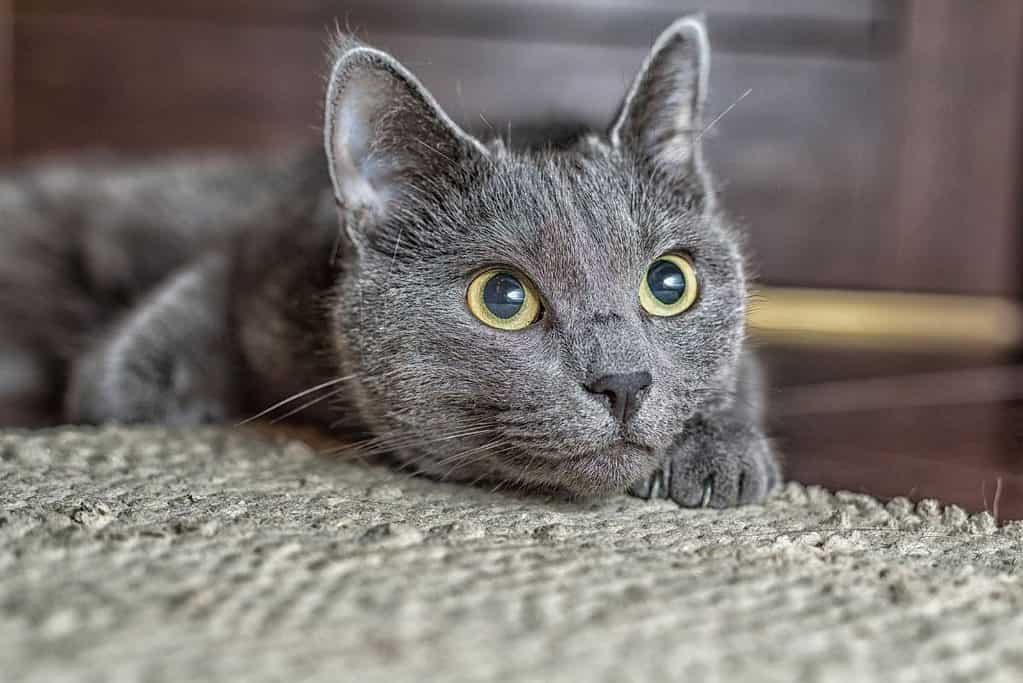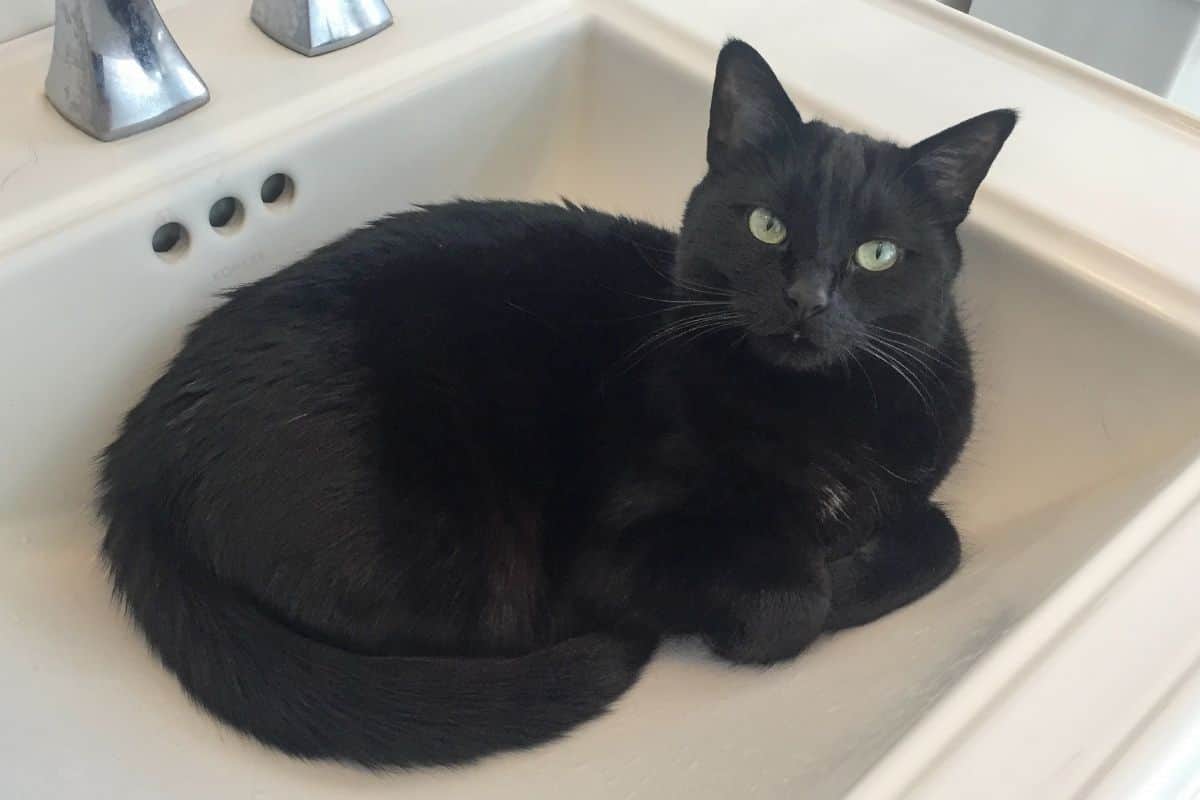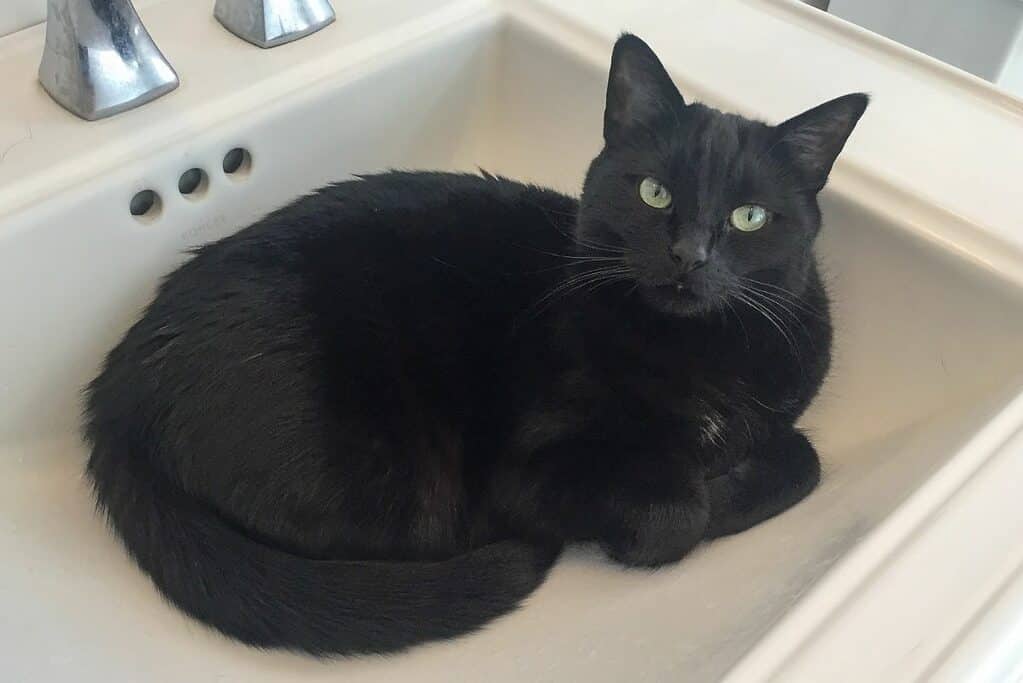Cats are an increasingly popular pet and the rate of cat ownership has risen dramatically in many countries.
Scientists estimate that about 10 – 20% of the human population is allergic to cats. Cat allergies are one of the most common types of pet allergies and the greatest source of inhaled allergens after house dust mites.
What makes people allergic to cats?
People can be allergic to proteins found in a cat’s skin cells, urine, and saliva, which are called allergens. A major cat allergen is Fel d 1 which can be found in dust in homes, even those without cats, and can become airborne.
When a person with an allergy to cats is exposed to these allergens, their immune system mistakenly identifies them as harmful and responds by releasing chemicals, such as histamine, into the body. These chemicals cause allergy symptoms, such as sneezing, watery eyes, and a runny nose.
There are several different proteins that can cause an allergic reaction in people, and the severity of the allergy can vary from person to person. Some people may have a mild reaction to a small amount of allergens, while others may have a severe reaction to even a small amount of exposure.
Allergic reaction to cats varies with people
It’s important to note that not all people who are allergic to cats will have the same symptoms or the same severity of symptoms. Some people may only experience mild symptoms, while others may have a more severe reaction. If you think you may be allergic to cats, it’s a good idea to see a doctor for a proper diagnosis and treatment.
Which cats are hypoallergenic?
There are a number of cat breeds that are thought to be hypoallergenic, which means that cat-allergic humans are less likely to experience an allergic reaction while around them.
What makes a cat hypoallergenic?
Hypoallergenic cats fall under two categories.
There are certain breeds of cats that produce less Fel d 1, the major cat allergen that is responsible for allergic reactions in humans.
These breeds produce fewer allergens, which are proteins found in a cat’s skin cells, urine, and saliva that can cause an allergic reaction in some people.
The second type of hypoallergenic cats are those with fur characteristics that result in less shedding and therefore less of the allergens that cause cat-related allergies in humans are spread around the home.
Some hypoallergenic cat breeds include:
Sphynx
This breed is known for its hairless body and can be a good choice for people with allergies.

Devon Rex
This breed has a thin, short coat that produces fewer allergens.
Cornish Rex
Like the Devon Rex, the Cornish Rex has a thin, short coat that produces fewer allergens.
Russian Blue
This breed has a short, dense coat that produces fewer allergens.

Siamese
The Siamese breed has a short, smooth coat that produces fewer allergens.
Is there a 100% hypoallergenic cat?
Since all cats create allergies to some extent, there is no such thing as a cat that is entirely hypoallergenic. There are no cats that don’t produce saliva containing cat allergens. Even hairless cats will lick themselves to groom and will shed dander containing cat allergens.
However, some cat breeds are considered to be hypoallergenic because they produce fewer allergens and are less likely to cause an allergic reaction in people who are allergic to cats.
For example, the Sphynx breed is known for its hairless body, which means there is less opportunity for allergens to collect on the fur. Other hypoallergenic cat breeds, such as the Devon Rex, Cornish Rex, Russian Blue, and Siamese, have short, fine coats that produce fewer allergens.
If you have allergies and are considering getting a cat, it’s a good idea to spend some time with the breed you’re interested in to see how your allergies react.
Managing allergies around cats
It is possible for people who are allergic to cats to live with a cat, but it may require some extra steps to manage the allergy. Here are a few tips that may help:
Choose a hypoallergenic cat breed
Some cat breeds produce fewer allergens and may be less likely to cause an allergic reaction.
Regularly groom and bathe your cat
Regular grooming and bathing can help reduce the amount of allergens on your cat’s fur.

Keep your home clean
Vacuum regularly and use a HEPA filter on your air conditioning and heating system to help remove allergens from the air.
Use allergy medication
Over-the-counter or prescription allergy medication can help manage allergy symptoms, especially if they are mild. If you have severe or life-threatening allergies to cats, being around cats, or owning one, is not something you should attempt.
Consider allergen immunotherapy
Allergen immunotherapy, also known as allergy shots, can help desensitize your body to the allergens that cause your symptoms. Make sure you consult with your doctor before deciding on allergen immunotherapy or any other approach involving living with a cat if you have allergies.
It’s important to note that even with these measures, it may still be difficult for impossible for some people with severe allergies to live with a cat. If you have cat allergies, make sure you spend time with cats to see how your allergies handle the exposure before deciding to own a cat as a pet.
References
Almqvist, C., Wickman, M., Perfetti, L., Berglind, N., Renstrom, A., Hedrén, M., … & Malmberg, P. (2001). Worsening of asthma in children allergic to cats, after indirect exposure to cat at school. American journal of respiratory and critical care medicine, 163(3), 694-698.
Bollinger, M. E., Eggleston, P. A., Flanagan, E., & Wood, R. A. (1996). Cat antigen in homes with and without cats may induce allergic symptoms. Journal of Allergy and Clinical Immunology, 97(4), 907-914. https://doi.org/10.1016/S0091-6749(96)80064-9
Bonnet, B., Messaoudi, K., Jacomet, F., Michaud, E., Fauquert, J. L., Caillaud, D., & Evrard, B. (2018). An update on molecular cat allergens: Fel d 1 and what else? Chapter 1: Fel d 1, the major cat allergen. Allergy, Asthma & Clinical Immunology, 14(1), 1-9. https://doi.org/10.1186/s13223-018-0239-8
Satorina, J., Szalai, K., Willensdorfer, A., Mothes-Luksch, N., Lukschal, A., & Jensen-Jarolim, E. (2014). Do hypoallergenic cats exist?–Determination of major cat allergen Fel d 1 production in normal and hypoallergenic cat breeds. Clinical and Translational Allergy, 4(2), 1-1. https://doi.org/10.1186/2045-7022-4-S2-P11
Sparkes, A. H. (2022). Human allergy to cats: A review of the impact on cat ownership and relinquishment. Journal of Feline Medicine and Surgery, 24(1), 43-52. https://doi.org/10.1177/1098612X211013016







